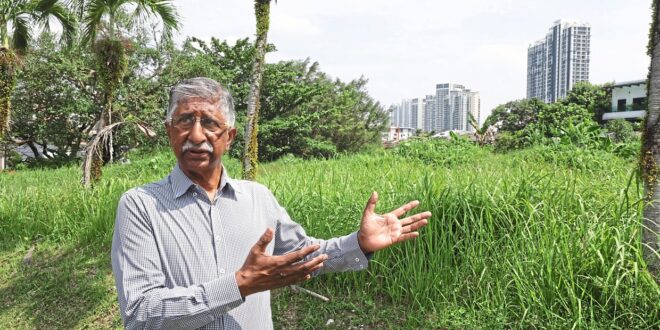RESIDENTS in Jalan Taman Seputeh 3, Kuala Lumpur, want the authorities to act against the owner of a vacant land near their homes, which they claim is a breeding ground for mosquitoes and a potential health hazard.
A visit by StarMetro showed that the plot was filled with overgrown weeds while the clogged monsoon drain next to it had stagnant water.
Housewife Sue Watts said she had lodged several complaints about the clogged drain via Kuala Lumpur City Hall’s (DBKL) KLCares app, but the complaints were rejected.
“The app says the drains are maintained by Alam Flora, but no one seemed to be taking responsibility to deal with the problem. The situation may turn worse when the rainy season arrives in September,” she said.
Meanwhile, Taman Seputeh Residents Association president Dr Balaeswaran Poobalasingam said several attempts had been made to ask the landowner to clean the plot, but nothing was done.
He said DBKL came to cut the grass in January last year due to a spike in dengue cases.
“I asked the landowner to clear the land again in September last year but received no response. The landowner should manage the property well through periodic cleaning,” he said.
He also urged DBKL to establish a clear guideline when it comes to managing public health issues.
Another resident Datuk Thavarajah Chinniah, 87, wants DBKL to hold the landowner accountable.
“It may be private land but dengue is a public health issue. Only DBKL has the power and resources to tackle public health and environmental problems like these,” he said.
DBKL advisory board member Lai Chen Heng said for privately owned land, DBKL must first identify the owner and issue them a compound notice.
“After that, DBKL can charge the owner for the cost incurred to clean up the land,” he said.
According to DBKL’s Health and Environment Department, a total of 5,328 dengue cases were recorded in Kuala Lumpur from January to May this year.
This is a 48.4% increase from the 3,591 recorded cases in the same period last year. A total of 80 dengue hotspots were also identified.
 BeritaKini.biz Berita Viral Terkini di Malaysia
BeritaKini.biz Berita Viral Terkini di Malaysia





